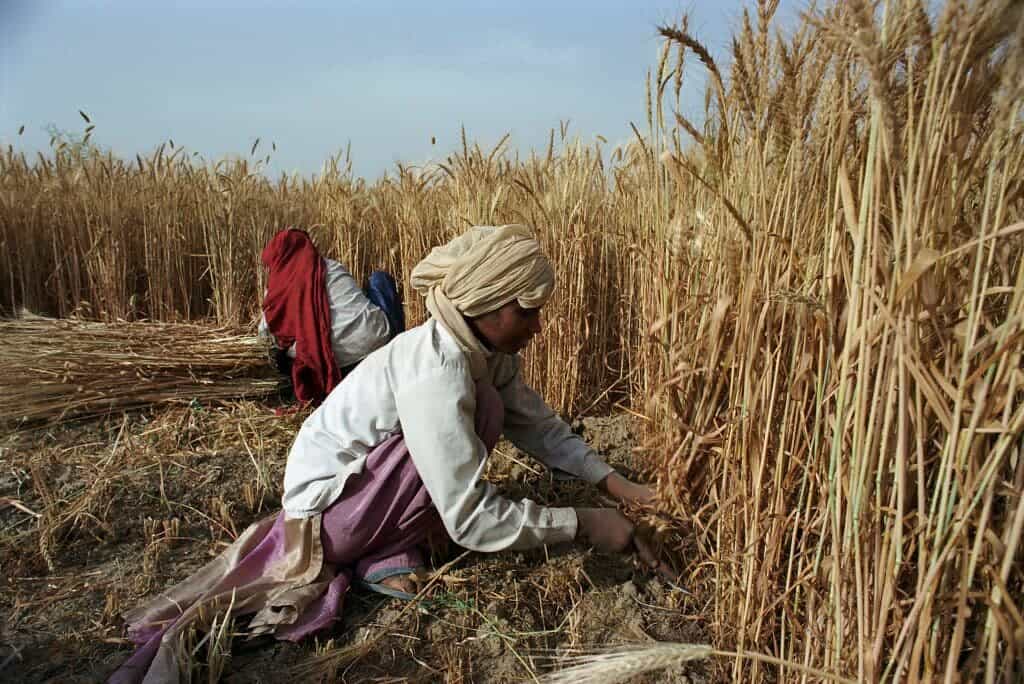It’s not even Summer yet, and a heatwave is blazing through large parts of India, with record temperatures of 120 degrees Fahrenheit (49 degrees Celsius) forecasted in the coming days. The extreme heat not only poses a risk to the health of millions of people but also to the country’s wheat harvest, at a time when the war in Ukraine is already creating a global food crisis.

A heat dome, similar to the one that has risen temperatures over the Pacific Northwest last year, has formed over India, according to the country’s meteorological department (IMD). Temperatures have already hit 122-year-old-records and could worsen in the coming months. Heat waves in this region usually peak in May before monsoon rains.
This March was the hottest in 122 years since the IMD started keeping records. It comes after an extreme heat in March last year, which was the third warmest on record. The number of heatwave days (over 40 degrees Celsius) in the country has increased fast, going from 41 in 1981-90 to 600 in 2011-20, according to an ongoing IMD research.
Northwest and central parts of India including Gujarat, Maharashtra, and Delhi were among the most affected regions. The highest maximum temperature of 45 degrees Celsius (113°F) was reported at Wardha, in central India. The country’s average temperature has risen 0.7 degrees Celsius (1.26° Fahrenheit) between 1901–2018, according to an IMD report, which linked this with global warming.
This is less than the global average, but it’s not just about average temperature: we know that climate change increases the risk of extreme weather events (such as heatwaves), which is what we’re seeing here. The report also found that under a business-as-usual scenario extreme heat could increase by 50% to 70% by 2100 — a global trend researchers have been warning about for over a decade.
Climate and agriculture
Millions of people in India’s affected regions lack access to air conditioning and could suffer from heat-related illnesses, which can be severe or even deadly. Also, the heat can make outdoor work unbearable for large parts of the day, which can have a significant impact on the economy. Almost half of the country’s working-age population is engaged in farming, according to official data.
Indian Prime Minister told US President Joe Biden earlier this month that the country could step in to ease the shortfall in wheat created by Russia’s invasion of Ukraine. India’s wheat exports reached 7.85 million tons in the fiscal year to March, an all-time record and a significant increase from the 2.1 million tons reported the previous year,
However, the extreme heat has particularly affected the country’s main wheat-growing regions. The agriculture information officer in the state of Punjab told India Today that the heat spell matured the wheat crops at a faster pace, reducing the grain size. This would result in a decline in yield, he added, anticipating a significant effect.
Harjeet Singh, a senior adviser to Climate Action Network International, told NBC the heatwave would have a “horrific” short and long-term impact on India and further afield, anticipating an increase in wheat prices. “The impact will be felt beyond India,” he added, as countries have been relying on India to compensate for their wheat needs.
However, these events clearly show just how impactful climate change already is. It’s no longer a problem for future generations, it’s a problem that strikes now, with very tangible and impactful effects. The window to take decisive action on climate change is still open, but it won’t stay open for too much longer.






